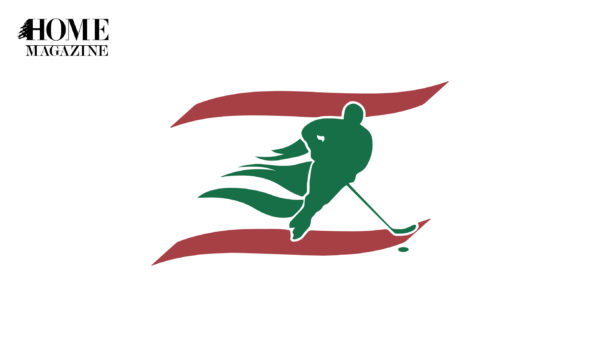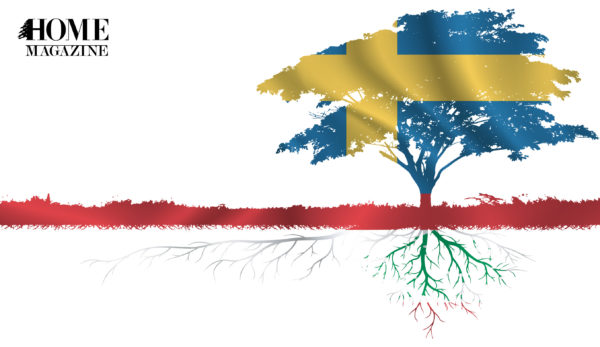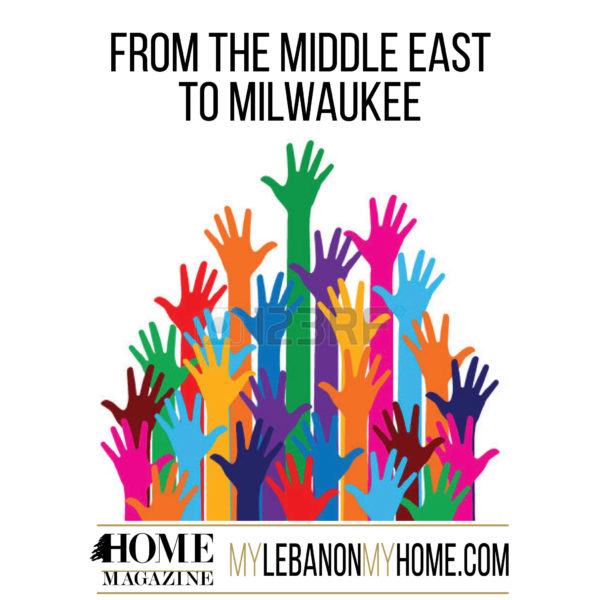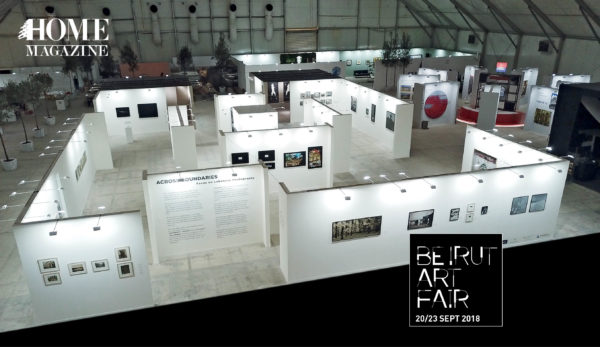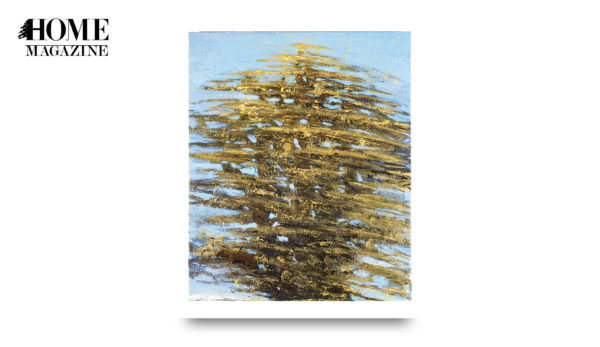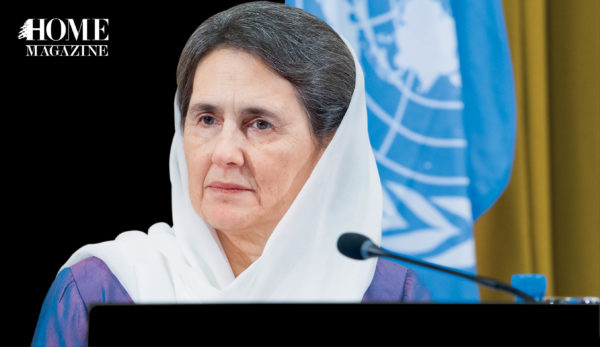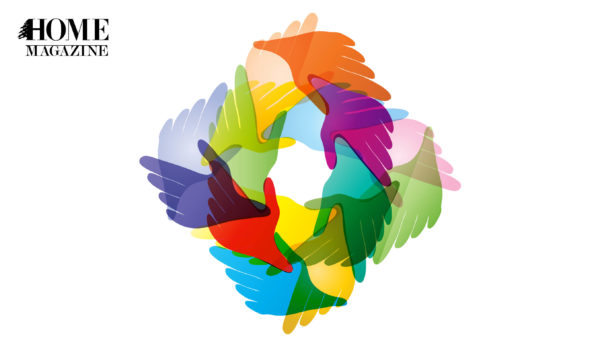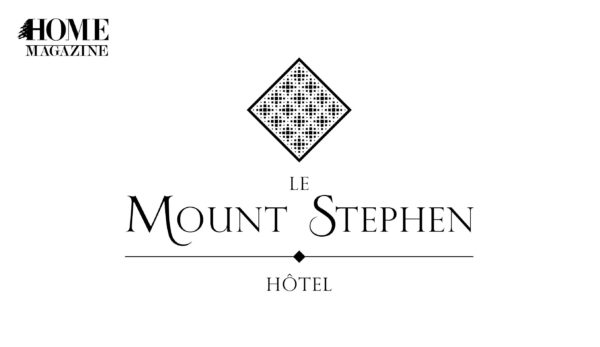Diaspora Lebanese-Americans whose ancestors left Lebanon before World War I are increasingly returning to reconnect with their HOMEland. For former U.S. Embassy Beirut Middle East Partnership Initiative (MEPI) Coordinator George W. Aldridge, the journey to the Lebanon of his great grandparents unfortunately did not occur until his last tour as a State Department official.
“So what brings you’uns to Uniontown?” the auberge receptionist asked in colloquial western Pennsylvania fashion.
“Here to visit family. The Davids,” I replied, not expecting her response: “Oh the Davids. They’re good people.”
To hear someone speak highly of the David family and, more broadly, the large local Syrian-Lebanese community, whose members (including my great grandparents John David and Panola Simon who left their HOME for Pennsylvania in 1909) are almost all descendants of Lebanese from Abdelli above Batroun, filled me with pride. The pride I first felt as a college freshman some forty years before.
Being an Arab-American adolescent in the late 1960s was complicated by the general population’s naïve attitude that Israeli Jews were invariably the “good guys” and Arabs (all Arabs) were the “bad guys.” Until community heroes like radio personality Casey Kasem, U.S. Senator James Abourezk, world affairs journalist Helen Thomas, political activist Dr. Jim Zogby, media critic Jack Shaheen and consumer advocate Ralph Nader took issue with the negative depictions and biases Arab- Americans endured, we were always on the defensive. It seemed that average Americans had no idea we too were Semites, the descendants of a marvelous Canaanite-Phoenician civilization.
“My efforts to conceal my ethnic identity were usually in vain since I definitely looked Middle Eastern and often had to explain that I wasn’t Hispanic.”
So, despite being an outstanding high school student and stellar basketball player, I sought to keep a low profile about my ethnic origins even though Texas is HOME to one of the largest and oldest Syrian-Lebanese communities in the United States, with sizeable Maronite and Orthodox congregations in Houston, San Antonio, Beaumont, Laredo, Dallas- Fort Worth, El Paso, Austin, Wichita Falls and Canadian. Lebanese-owned department and grocery stores are prominent in several East Texas towns, notably Tyler and Palestine. My efforts to conceal my ethnic identity were usually in vain since I definitely looked Middle Eastern and often had to explain that I wasn’t Hispanic. Then again, my classmates looked puzzled whenever I mentioned that my family members in Uniontown and western Pennsylvania, although self-identifying as Syrians, were from Lebanon. It was readily apparent they had no idea where Lebanon is and how much its people have contributed to human development. Having my adoptive father’s last name was an added complication.
Then came my eureka moment.
As part of a college sociology class assignment, I toured San Antonio’s Institute of Texan Cultures—a museum that has extensive displays of the more than two dozen major ethnic groups, including Native Americans, who comprise the state’s human mosaic. After checking out several exhibits, I turned a corner and to my amazement saw “The Syrian-Lebanese Texans.” I was mesmerized. What a HOMEcoming (of sorts)! Finally, I thought to myself, an awareness of our community’s achievements and accomplishments.
The exhibit touched on many prominent families such as the Jamails of Houston, whose ancestors were from Wadi Shaheen and Ain El Kharroub near Bikfaya, and the Abrahams/Maloufs of Canadian, whose forefathers and mothers were from Kafarakab. It noted that the denizen of the Kazen family in Laredo that originated from Keserwan, Abraham “Chick” Kazen, was the first Arab-American elected to Congress (1967-1985).
As an athlete, I was delighted to learn that the University of Texas’s 1968 All- American running back, Chris Gilbert, who was the first collegiate football player to gain more than 1,000 years in three straight seasons, was of Lebanese descent. Another Lebanese lad, Joey Aboussie (Abu Asi) from Wichita Falls would follow in Chris Gilbert’s footsteps as a Longhorn running back.
Various business leaders were featured, notably Joseph Marion Haggar, an immigrant from Jazzin, who founded America’s most successful privately-owned clothing company, Haggar Apparel, based in Dallas and his El Paso rivals Mansour and Hana Farah, who along with their sons William and James, established the world’s largest manufacturer of men’s slacks. As one might expect, several Lebanese made fortunes in the oil and gas industry. Among them were Michel T. Halbouty, a wildcatter whose nickname was “Oilman of Legend,” the Abrahams and Maloufs from Canadian and Eddie Kadane.
Queen Noor’s father, Najeeb Elias Halaby, the former president and CEO of Pan American World Airlines and the second administrator of the U.S. Federal Aviation Agency, was prominently featured along with Clifford Jamal Antone, a renowned music promoter from Port Arthur who established Austin, Texas as the “live music capital of the world.”

But the most captivating person profiled was a non-native Texan, an “immigrant” from Lake Charles, Louisiana and Tulane University graduate: America’s greatest cardiovascular surgeon, Dr. Michael Elias DeBakey. The son of Shakir and Raheeja Debaghi, Dr. DeBakey revolutionized open heart surgery and created numerous surgical procedures and instruments to remedy congestive heart failure and other cardiothoracic maladies. Next to comedian and philanthropist Danny Thomas, who founded St. Jude Children’s Research Hospital in Memphis, Tennessee, Dr. DeBakey was surely the best known and admired Arab-American. In 1969 President Lyndon Baines Johnson bestowed on Dr. DeBakey the Presidential Medal of Freedom. He continued as a heart surgeon into his 90s! Today, an imposing bust of Dr. DeBakey welcomes students and faculty to the American University of Science and Technology in Ashrafieh.
Seeing this exhibit was a treasured awakening that had me rereading Gibran Khalil Gibran’s 1926 An Open Letter to Syrian American Youth, in which he implores us to be involved American citizens while also keeping in mind the contributions our Levantine ancestors made to humankind. It is a call to action.
Fast forward into the mid-1980s. Once again turmoil in the Near East and the horrors of the Civil War in Lebanon along with the Israeli invasion and occupation had Americans assuming our people were violent. Old ugly stereotypes resurfaced. This time, however, I did not shy away from standing up for our people thanks to two dear Lebanese friends, brothers Dr. Ali and Ahmad Safa from Nabatieh. Ali, in particular, recounted the beauty of my ancestral HOMEland and explained why it was my duty to speak out on behalf of the Lebanese people and give an equal voice to the plight of the Palestinians. Ali argued that as a fourth-generation Arab-American with a natural knack for influencing others, I could offer persuasive insights as to how the Zionist-Palestinian Arab dispute over the division of Palestine had adversely affected Lebanon; that the societal schisms and infighting among Lebanese were a direct consequence of Palestine’s arbitrary partition and subsequent Nakba.
“Get active!” he implored before suggesting that I apply for a position with the National Association of Arab Americans (NAAA), an organization largely founded by concerned Lebanese Americans. Thanks to Ali’s urging, I successfully applied for the NAAA’s southwestern office director’s position, based in Arlington, Texas. For nearly five years I campaigned for our people alongside other, more experienced activists such as former Arab League envoy Dr. Munir Bayoud, our community’s acknowledged mayor, or mukhtar, from Marjayoun, and Ruth Ann Skaff, the director of the southwest office of the American-Arab Anti-Discrimination Committee (ADC), a civil rights organization founded by Senator James Abourezk, whose parents immigrated from Kfeir (Hasbaya District) to South Dakota.
In late June 1990 I achieved a boyhood dream when I entered the U.S. Foreign Service. Although I would eventually serve in Morocco, Tunisia and Sudan and as the State Department’s program officer for Palestinian refugees and its liaison to the UN Relief and Works Agency for Palestine Refugees in the Near East (UNRWA), it was not until October 2015—on my last assignment— that I finally reached HOME. For two inspiring years, I had the honor of being the State Department’s Middle East Partnership Initiative (MEPI) Beirut office coordinator—a position that allowed my Lebanese staff members Maya Barhouche and Arabella Barbir and me to assist deserving nongovernmental organizations with verifiable track records of community service. Courtesy of my position, I met hundreds of Lebanese from all backgrounds committed to strengthening Lebanon’s democracy while helping others—the disabled, the visually impaired, the aged, the disenfranchised, the rural poor—live more productive and self-sufficient lives.
Coming HOME was a blessing. I visited Abdelli on several occasions and met for the first time a distant relative, Simon AbiNader, a retiree-returnee who served for more than 30 years with the U.S. Customs and Border Protection Agency. As an added bonus I got to know Simon’s renowned cousin, Jean AbiNader, who for many years was the president of the National U.S.-Arab Chamber of Commerce, a close associate of Dr. Jim Zogby and the Arab American Institute, and a founding member of the American Task Force for Lebanon (ATFL), headed by former U.S. Ambassador to Morocco Edward Gabriel. I reconnected with Ali and Ahmad and met their beloved families. In the company of newfound friends—Shi’a, Druze, Sunni, Maronite, Orthodox—I walked among the Cedars of Lebanon in the Shouf and on Jebel al-Makmel, toured Beiteddine Palace, visited Byblos and Trabulous, and held Syrian refugee children cared for by compassionate Lebanese.
It was so good to be finally HOME… in Lebanon.





